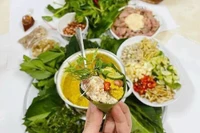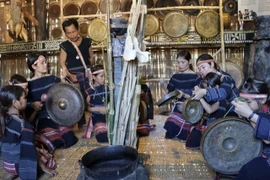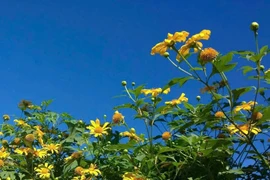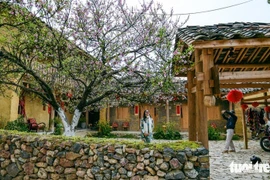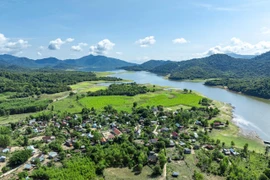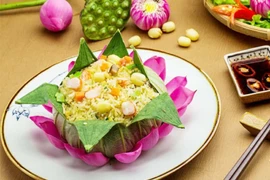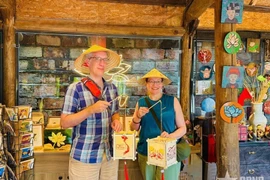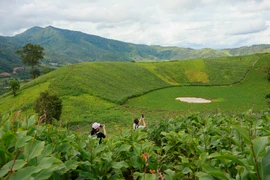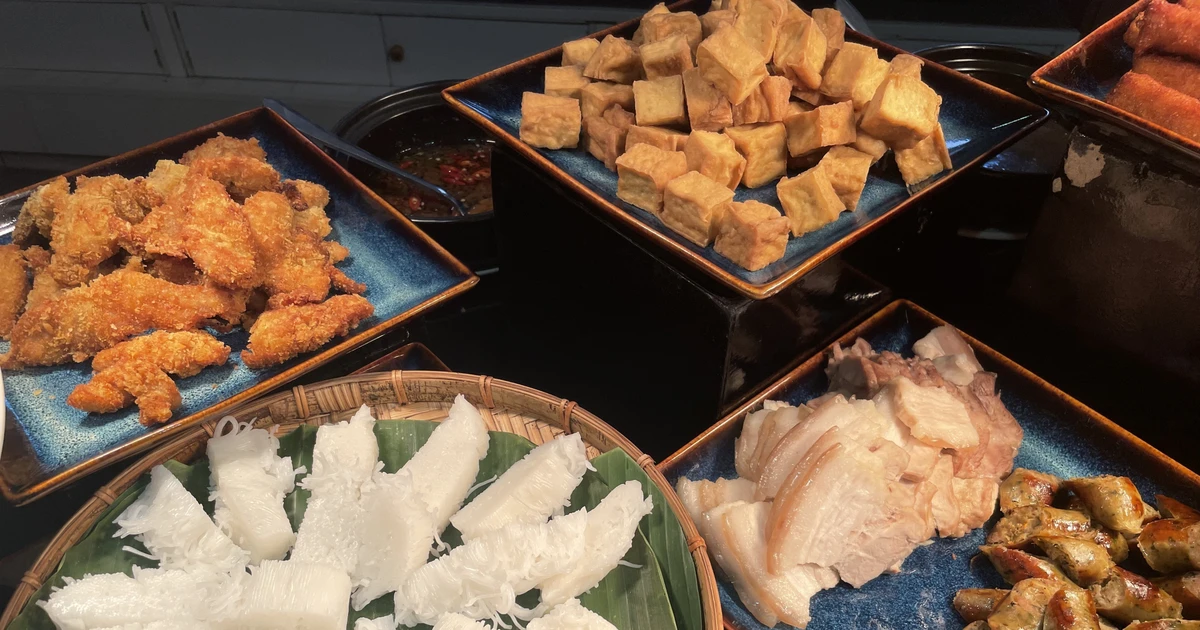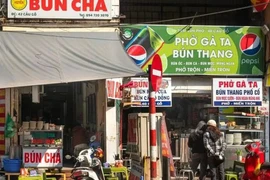In Stơr Village, meals are prepared with ingredients sourced directly from the land - free-range chicken, stream fish, sticky rice, cassava leaves, wild turmeric flowers, bitter eggplant, and tơ pung, a porridge made from pounded grains and chicken offal.
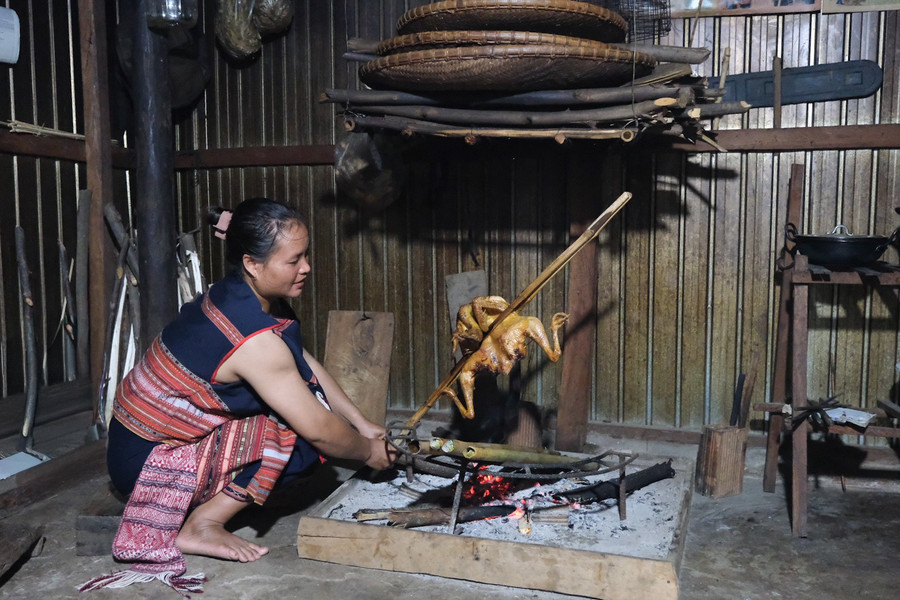
For Ms. Đinh Thị Nhung, a local host, simplicity is the essence: “Bahnar dishes are made without elaborate marinating. Seasonings like lemongrass, turmeric, chili, and galangal come from the forest to preserve the food’s purest flavors.”
Her husband, Mr. Đinh Mỡi, introduces visitors to mountain snails, prized both as food and natural remedy. Known locally as “medicinal snails,” they are said to ease indigestion and joint pain.
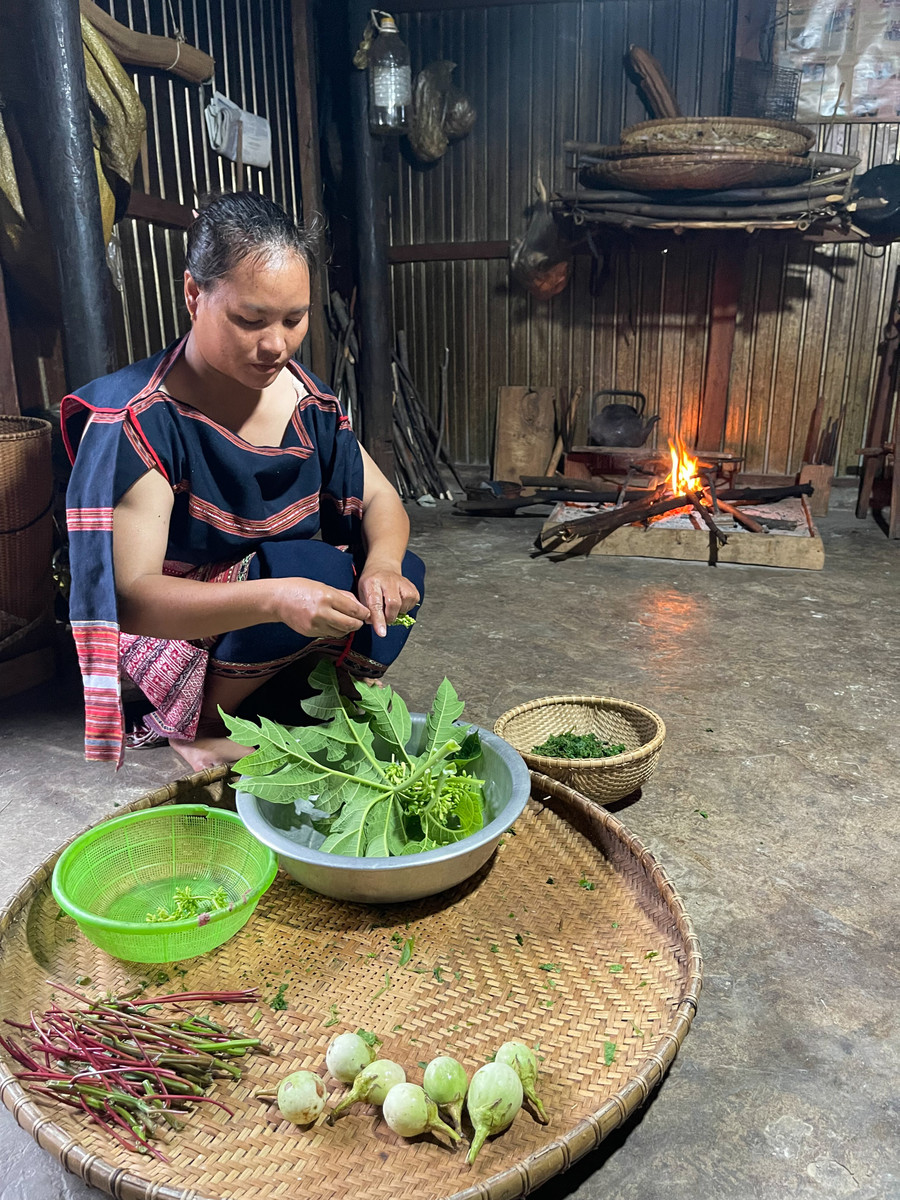
Found beneath decaying forest leaves, their meat carries a herbal aroma with a subtle bitterness. From July to October, Bahnar communities even hold a snail-gathering season.
Meals are often paired with ginseng-infused liquor from the Kbang highlands, offering guests a sensory experience that locals describe as a forest banquet. “The forest provides food according to the season,” Nhung explains. “What we cannot eat ourselves, we sell or trade.”
The culinary journey extends to the Mơ H’ra–Đáp community tourism village, where cassava, once a “famine food,” has become a signature delicacy.
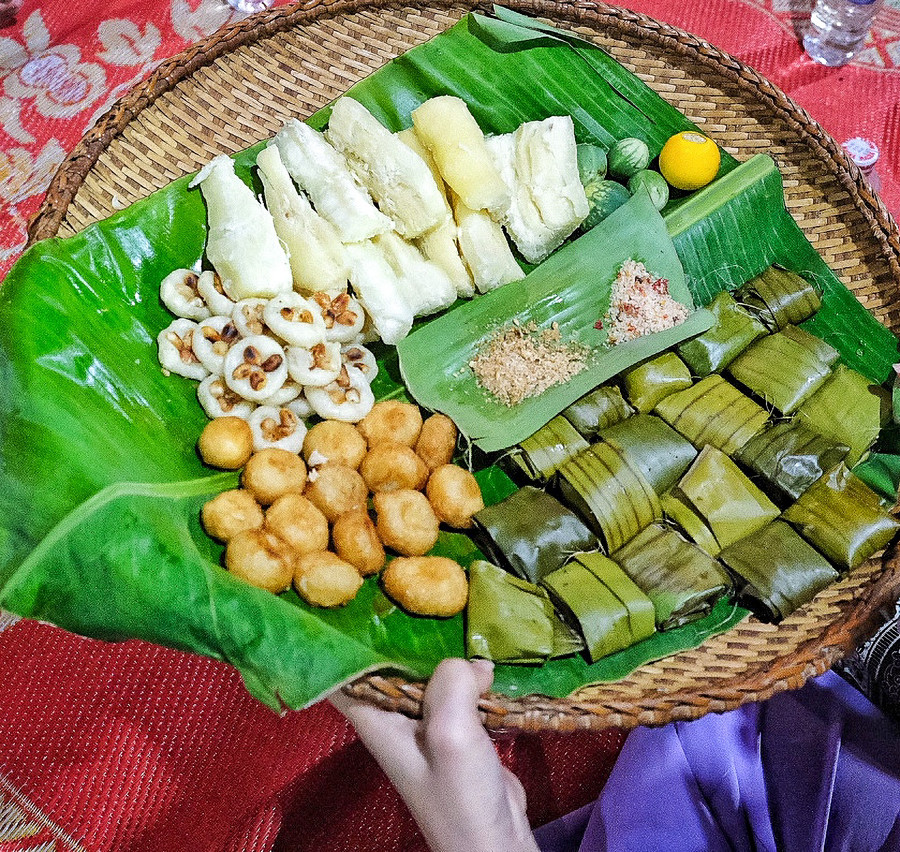
Villagers pound steamed cassava into sticky dough to create golden-fried balls, banana leaf–wrapped cakes, or bite-sized treats filled with roasted peanuts. A newer version blends cassava flour with coconut milk and grated coconut.
Despite its presence in city markets, locals believe its true character can only be appreciated in Bahnar villages, where traditional cassava varieties are preserved.
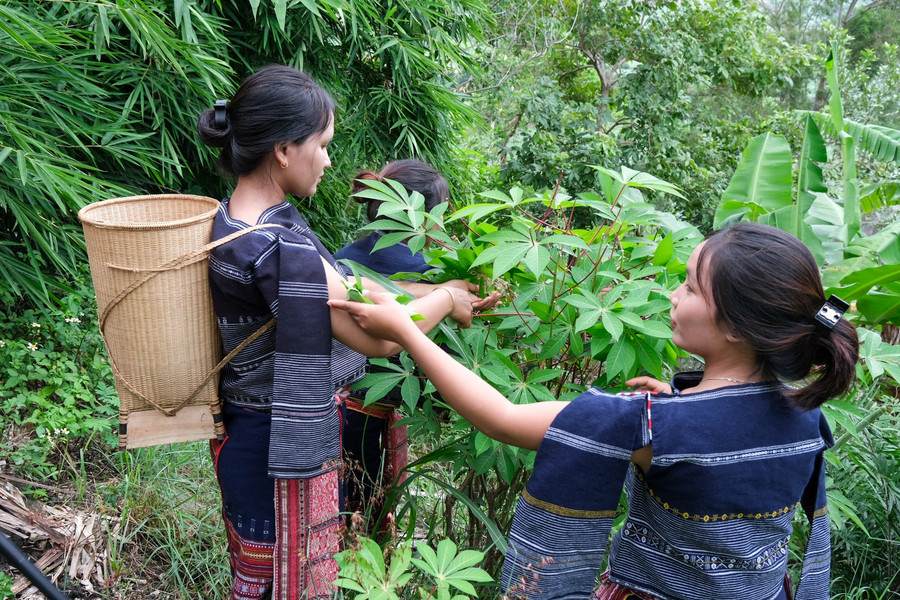
Elder Đinh Hmưnh recalls that bitter eggplant, a wild, quail-egg-sized fruit, has long been paired with cassava to balance its heaviness. “The subtle bitterness helps the stomach and enhances the flavor,” he says.
From the crunch of medicinal snails to the nutty chewiness of cassava cakes, Bahnar cuisine weaves together sustenance, memory, and folk wisdom.
More than rustic dishes, the food of Tơ Tung serves as a cultural narrative, one that continues to nourish both body and tradition along the forests of the Eastern Trường Sơn.

